Papers by Jan Thomas Rosnes
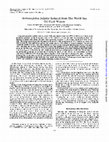
Applied and Environmental Microbiology, Apr 1, 1994
A hyperthermophilic sulfate reducer, strain 7324, was isolated from hot (75°C) oil field waters f... more A hyperthermophilic sulfate reducer, strain 7324, was isolated from hot (75°C) oil field waters from an oil production platform in the Norwegian sector of the North Sea. It was enriched on a complex medium and isolated on lactate with sulfate. The cells were nonmotile, irregular coccoid to disc shaped, and 0.3 to 1.0 ,um wide. The temperature for growth was between 60 and 85°C with an optimum of 76°C. Lactate, pyruvate, and valerate plus H2 were utilized as carbon and energy sources with sulfate as electron acceptor. Lactate was completely oxidized to CO2. The cells contained an active carbon mopoxide dehydrogenase but no 2-oxoglutarate dehydrogenase activity, indicating that lactate was oxidized to CO2 via the acetyl coenzyme A/carbon monoxide dehydrogenase pathway. The cells produced small amounts of methane simultaneously with sulfate reduction. F420 was detected in the cells which showed a blue-green fluorescence at 420 nm. On the basis of morphological, physiological, and serological features, the isolate was classified as an Archaeoglobus sp. Strain 7324 showed 100%/ DNA-DNA homology with A. fulgidus Z, indicating that it belongs to the species A. fulgidus.
European journal of nutrition & food safety, Feb 26, 2019
European journal of nutrition & food safety, Dec 15, 2018
The Norwegian Scientific Committee for Food Safety (Vitenskapskomiteen for mattrygghet, VKM) has,... more The Norwegian Scientific Committee for Food Safety (Vitenskapskomiteen for mattrygghet, VKM) has, at the request of the Norwegian Food Safety Authority (Mattilsynet; NFSA), assessed the risk of "other substances" in food supplements sold in Norway. These risk assessments will provide NFSA with the scientific basis for regulation of the addition of "other substances" to food supplements and other foods.

Elsevier eBooks, 1991
Abstract A consortium consisting of a thermophilic carbohydrate degrading bacterium and a thermop... more Abstract A consortium consisting of a thermophilic carbohydrate degrading bacterium and a thermophilic sulfate-reducing bacterium was enriched from oil-field production water originating from subsea hydrocarbon reservoirs in the Norwegian sector of the North Sea. The reservoir temperatures are in the range of 60–100 °C (140–212 °F) and the pressures are between 200–400 bars (2900–5800 psi). The consortium degraded sugars in a synthetic medium, containing sulfate, with hydrogen sulfide as the ultimate end product of the sulfate reduction. The degradation of glucose and the production of hydrogen sulfide have been determined both at ambient conditions and at elevated temperature and pressure conditions. The sulfate-reducing bacteria form endospores and belong to the genus Desulfotomaculum. Two strains, T90A and T93B, were isolated after autoclaving mixed cultures at 120 °C (248 °F), allowing only sporeformers to survive. The strains grew autothrophically on H 2 + CO 2 and heterotrophically on fatty acids and on alcohols. Sulfate, sulfite and thiosulfate were used as electron acceptors. Pure cultures of the sugar fermenting bacterium have not been obtained. Such consortia including biopolymer-degraders may have detrimental effects in sulfate-containing reservoirs when carbohydrates are added to the injection water either as a biopolymer to increase the viscosity, or as a substrate for bacteria in MEOR-processes. The effects of the bacterial carbohydrate degradation activity will be a reduced efficiency of the added biopolymer as a viscosity promotor and a high probability of reservoir souring.
35, 2014
Persons working for VKM, either as appointed members of the Committee or as external experts, do ... more Persons working for VKM, either as appointed members of the Committee or as external experts, do this by virtue of their scientific expertise, not as representatives for their employers. The Civil Services Act instructions on legal competence apply for all work prepared by VKM.
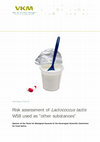
The Norwegian Scientific Committee for Food Safety (Vitenskapskomiteen for mattrygghet, VKM) has,... more The Norwegian Scientific Committee for Food Safety (Vitenskapskomiteen for mattrygghet, VKM) has, at the request of the Norwegian Food Safety Authority (Mattilsynet; NFSA), assessed the risk of "other substances" in food supplements sold in Norway. These risk assessments will provide NFSA with the scientific basis while regulating the addition of "other substances" to food supplements and other foods. "Other substances" are described in the food supplement directive 2002/46/EC as substances other than vitamins or minerals that have a nutritional and/or physiological effect. It is added mainly to food supplements, but also to other foods. VKM has not in this series of risk assessments of "other substances" evaluated any claimed beneficial effects from these substances, only possible adverse effects. The present report is a risk assessment of Lactococcus lactis W58, and it is based on previous risk assessments and articles retrieved from a liter...
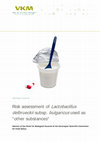
The Norwegian Scientific Committee for Food Safety (Vitenskapskomiteen for mattrygghet, VKM) has,... more The Norwegian Scientific Committee for Food Safety (Vitenskapskomiteen for mattrygghet, VKM) has, at the request of the Norwegian Food Safety Authority (Mattilsynet; NFSA), assessed the risk of "other substances" in food supplements sold in Norway. These risk assessments will provide NFSA with the scientific basis while regulating the addition of "other substances" to food supplements and other foods. "Other substances" are described in the food supplement directive 2002/46/EC as substances other than vitamins or minerals that have a nutritional and/or physiological effect. It is added mainly to food supplements, but also to other foods. VKM has not in this series of risk assessments of "other substances" evaluated any claimed beneficial effects from these substances, only possible adverse effects. The present report is a risk assessment of Lactobacillus delbrueckii subsp. bulgaricus, and it is based on previous risk assessments and articles r...
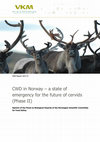
Unless comprehensive steps are taken to tackle Chronic Wasting Disease (CWD), it will continue to... more Unless comprehensive steps are taken to tackle Chronic Wasting Disease (CWD), it will continue to spread within the Norwegian cervid population. The disease will not disappear by itself. This is the main conclusion of a new risk assessment report published by the Norwegian Scientific Committee for food safety (VKM). The Norwegian Food Safety Authority (Mattilsynet, NFSA) and the Norwegian Environment Agency (Miljødirektoratet, NEA) requested the Norwegian Scientific Committee for Food Safety (Vitenskapskomiteen for mattrygghet, VKM) for a scientific opinion on Chronic wasting disease (CWD) in cervids. The project was divided into two phases, and VKM published the scientific opinion from phase I "CWD in Norway" in June 2016. The current report is the result of phase II. VKM was asked to provide updated information on food safety, aspects important for transmission of CWD within and between populations and species, and the potential origin of the disease in Norway. Moreover,...
The Norwegian Food Safety Authority (NFSA) requested the Norwegian Scientific Committee for Food ... more The Norwegian Food Safety Authority (NFSA) requested the Norwegian Scientific Committee for Food Safety (VKM) to prepare a guidance document outlining the methodology to be used for the safety assessments of microorganisms used as "other substances".
Journal of Food Science, May 1, 2003
Fresh Atlantic salmon fillets packaged under modified atmosphere (MA) (CO 2 :N 2 60:40) and air w... more Fresh Atlantic salmon fillets packaged under modified atmosphere (MA) (CO 2 :N 2 60:40) and air was stored at superchilled (-2°C) and chilled (+4°C) temperatures. Changes in sensory scores, microbial growth, headspace gas composition, water loss, and pH were monitored during 24 d of storage. The superchilled MA packaged salmon maintained a good quality, with negligible microbial growth (<1000 colony-forming units [CFU]/g) for more than 24 d based on both sensory and microbial analyses (aerobic plate count, H2S-producing, and psychrotrophic bacteria). Superchilled salmon in air had a 21-d sensory shelf life, whereas MA and air-stored fillets at chilled conditions was spoiled after 10 d and 7 d, respectively.
Molecules, Aug 11, 2022
Effect of Citric Acid Cross Linking on the Mechanical, Rheological and Barrier Properties of Chit... more Effect of Citric Acid Cross Linking on the Mechanical, Rheological and Barrier Properties of Chitosan.
CRC Press eBooks, Mar 21, 2006
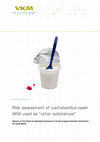
The Norwegian Scientific Committee for Food Safety (Vitenskapskomiteen for mattrygghet, VKM) has,... more The Norwegian Scientific Committee for Food Safety (Vitenskapskomiteen for mattrygghet, VKM) has, at the request of the Norwegian Food Safety Authority (Mattilsynet; NFSA), assessed the risk of "other substances" in food supplements sold in Norway. These risk assessments will provide NFSA with the scientific basis while regulating the addition of "other substances" to food supplements and other foods. "Other substances" are described in the food supplement directive 2002/46/EC as substances other than vitamins or minerals that have a nutritional and/or physiological effect. It is added mainly to food supplements, but also to other foods. VKM has not in this series of risk assessments of "other substances" evaluated any claimed beneficial effects from these substances, only possible adverse effects. The present report is a risk assessment of Lactobacillus casei W56, and it is based on previous risk assessments and articles retrieved from a lite...
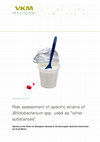
The Norwegian Scientific Committee for Food Safety (Vitenskapskomiteen for mattrygghet, VKM) has,... more The Norwegian Scientific Committee for Food Safety (Vitenskapskomiteen for mattrygghet, VKM) has, at the request of the Norwegian Food Safety Authority (Mattilsynet; NFSA), assessed the risk of "other substances" in food supplements sold in Norway. These risk assessments will provide NFSA with the scientific basis for regulation of the addition of "other substances" to food supplements and other foods. "Other substances" are described in the food supplement directive 2002/46/EC as substances other than vitamins or minerals that have a nutritional and/or physiological effect. It is added mainly to food supplements, but also to other foods. VKM has not in this series of risk assessments of "other substances" evaluated any claimed beneficial effects from these substances, only possible adverse effects. The present report is a risk assessment of Bifidobacterium lactis Bi-07, Bifidobacterium bifidum W23, Bifidobacterium longum Rosell-175, Bifidobac...
Norsk tidsskrift for ernæring


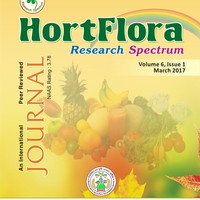
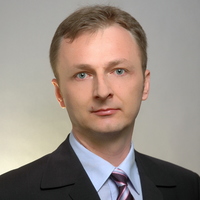



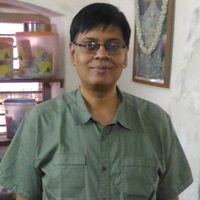

Uploads
Papers by Jan Thomas Rosnes